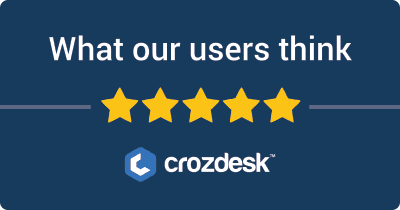
Introduction: Todoist vs. Airtable in Task Management Tools
In the realm of task management tools, Todoist and Airtable stand out as two popular options, each serving distinct user needs.
Main Purposes:
- Todoist is primarily focused on personal and team productivity, facilitating task tracking and project management with a straightforward approach aimed at enhancing efficiency.
- Airtable, on the other hand, blends a database’s capabilities with a spreadsheet’s usability, allowing users to manage tasks while offering extensive customization options for project organization.
Common User Considerations:
- Users often turn to Todoist for its intuitive task management features, reminders, and collaborative capabilities.
- Airtable appeals to users seeking flexibility in organizing information and tasks, thanks to its customizable templates and data views.
Primary Comparison Aspects:
- Features: Todoist offers task prioritization, recurring tasks, and integrations with various apps. Airtable provides a broader range of customizable fields, views (grid, calendar, kanban), and collaboration tools.
- Pricing: Todoist typically offers a freemium model with premium features available at a monthly or annual fee. Airtable’s pricing depends on the number of users and selected features, with free tiers and more comprehensive plans available.
- Ease of Use: Todoist’s interface is designed for quick access and simplicity, making it easy for new users. Airtable’s flexibility may require a steeper learning curve for those unfamiliar with database organization.
This comparison aims to equip users with the necessary insights to choose the tool that best aligns with their task management needs.
Todoist VS Airtable: Which tool is the most popular?
| Tool | Number of Reviews | Average Rating | Positive Reviews | Neutral Reviews | Negative Reviews |
|---|---|---|---|---|---|
| Todoist | 13 | 3.46 | 7 | 2 | 4 |
| Airtable | 57 | 3.33 | 34 | 1 | 22 |
Todoist is the most popular tool based on the average rating, with an average user rating of 3.46 from 13 reviews. It has a balanced feedback with 7 positive reviews, 2 neutral, and 4 negative.
Airtable, while having the highest number of reviews at 57, has a lower average rating of 3.33. It garnered a significant number of positive reviews (34) but also faces a high count of negative reviews (22), indicating mixed sentiments among users.
In summary, Todoist holds the edge in average rating, while Airtable leads in the volume of reviews.


Todoist and Airtable: Quick Comparison Overview
| Feature/Aspect | Ahrefs | SEMrush |
|---|---|---|
| Primary Features | – Site Explorer – Keyword Explorer – Backlink Checker – Content Explorer – Rank Tracker |
– Keyword Research – Site Audit – Position Tracking – Content Analyzer – Marketing Insights |
| Target Audience | – SEO professionals – Digital marketers – Agencies focusing on content marketing and backlink analysis |
– Digital marketers – SEO experts – Content marketers – Social media marketers and PPC specialists |
| Main Advantages | – Robust backlink analysis – Comprehensive keyword data – Intuitive user interface – Constantly updated index |
– All-in-one digital marketing tool – Extensive competitor analysis – Wide array of tools for SEO and PPC – Integrated social media management |
| Core Value Proposition | Focused on providing in-depth SEO insights, particularly strengths in backlink profiles and organic keyword rankings. Ideal for users prioritizing content strategy and link-building efforts. | Offers a holistic view of digital marketing, making it easier to manage all aspects of online presence through an extensive range of tools for SEO, PPC, and social media marketing. |
| Ideal Use Cases | – Conducting comprehensive link audits – Developing effective content strategies – Tracking backlinks and organic rankings – Keyword planning for SEO campaigns |
– Managing and optimizing PPC campaigns – Conducting competitive analysis for market positioning – Comprehensive content analytics and SEO tracking – Social media metrics and management |
Most liked vs most disliked features of Todoist and Airtable
| Tool | Most Liked Features | Most Disliked Features |
|---|---|---|
| Todoist | – Efficiency of quick task entry – User-friendly interface – Customizable tasks, subtasks, and projects – Seamless synchronization across devices – Responsive customer service |
– Ongoing bugs (e.g., SNOOZE reminder malfunctions) – Minor issues disrupting workflow – Insufficient response to bug reports – Paid subscription limits critical features – Performance drawbacks compared to alternatives |
| Airtable | – Simple and intuitive interface – Flexibility in data presentation and organization – Effective collaboration capabilities – Diverse integration options – Straightforward import/export functionalities |
– Desire for more advanced features – Problems with certain integrations – Limitations for larger or complex projects compared to traditional D.B. systems – Overwhelming visualization capabilities – Learning curve for advanced functionalities |
Key Features of Todoist vs Airtable
Certainly! Both Todoist and Airtable are powerful tools that can be utilized for task management, but they cater to different needs and offer unique features. Here’s a comparison highlighting the key features of each tool, along with their benefits and unique aspects.
Todoist
-
Task Organization:
- Benefits: Users can create projects for various tasks, allowing for a structured organization of work. Tasks can be nested within projects, making it easy to manage complex workflows.
- Unique Aspect: The ability to maintain a comprehensive ‘Inbox’ feature allows users to quickly jot down tasks and categorize them later.
-
Due Dates and Recurring Tasks:
- Benefits: Users can set due dates for individual tasks and create recurring tasks (e.g., daily, weekly). This ensures users stay on top of deadlines and develop consistent task habits.
- Unique Aspect: Todoist employs natural language processing for due dates, allowing users to type phrases like “every Monday” to set up recurrence easily.
-
Labels and Filters:
- Benefits: Users can tag tasks with labels and create filters to view specific tasks that meet certain criteria. This can enhance focus on priority items and improve productivity.
- Unique Aspect: The customizable filters offer users the ability to create personalized views, tailoring the interface to their workflow.
-
Karma System:
- Benefits: Todoist’s gamification through a Karma system motivates users by rewarding them for completing tasks and maintaining productivity streaks.
- Unique Aspect: The visual representation of productivity trends encourages users to maintain their task management habits.
-
Integrations:
- Benefits: Supports integration with numerous third-party applications (e.g., Google Calendar, Slack), allowing for seamless task management alongside other tools.
- Unique Aspect: Some integrations can be customized, enabling users to build workflows that suit their specific needs.
-
Collaboration:
- Benefits: Users can share projects and assign tasks to others, facilitating teamwork and collaboration on shared projects.
- Unique Aspect: The simplicity of sharing projects and tasks makes it accessible for both individuals and teams without complex setups.
Airtable
-
Flexible Database Structure:
- Benefits: Airtable functions as a database that allows users to create custom tables, which can hold various types of content, such as attachments, checklists, or long texts, catering to diverse project requirements.
- Unique Aspect: Its flexibility and schema-less nature let users design a workflow that closely matches their project management style.
-
Field Types and Customization:
- Benefits: Users can choose different field types (text, attachments, dropdowns, checkboxes, etc.) to simply organize and present data effectively.
- Unique Aspect: This customization offers a tailored experience that suits individual or team preferences, which is rare in standard task management tools.
-
Views and Filtering:
- Benefits: Airtable provides multiple views (grid, calendar, Kanban, gallery) to visualize data in the best format. Users can filter and sort data easily according to specific criteria.
- Unique Aspect: Users can switch between views dynamically, adapting their perspective on the tasks and projects instantaneously.
-
Collaboration Features:
- Benefits: Collaboration is built into the platform, allowing real-time editing, comments, and shared views across teams.
- Unique Aspect: The ability to tag team members in comments and assign responsibilities directly within the database can enhance seamless communication.
-
Automations:
- Benefits: Users can set up automations that trigger actions when certain conditions are met, which can save time on repetitive tasks.
- Unique Aspect: Airtable’s automation features can connect with external services, expanding its functionality as a task management tool significantly.
-
Templates:
- Benefits: Offers a variety of templates for different use cases, helping users get started quickly and providing inspiration for optimal setups.
- Unique Aspect: The breadth of templates available (including project tracking, content calendars, and event planning) covers diverse use cases, making it adaptable across industries.
Summary
-
Todoist excels in straightforward task management with intuitive features focused on individual productivity. It’s best suited for those who prefer a simple yet efficient task management system.
-
Airtable shines in versatility and collaborative capabilities, offering a customizable database approach that caters to teams needing complex project tracking. It is particularly valuable for users looking for a blend of task management and data organization.
Choosing between the two largely depends on the specific needs of the user or team, as each provides distinct functionalities tailored to different aspects of task management.
Todoist vs Airtable Pricing Comparison
| Feature | Todoist Pricing | Airtable Pricing |
|---|---|---|
| Free Tier | Free plan with basic task management features. | Free plan for individuals with basic features and limited record limits. |
| Pricing Tiers | Premium: $5/month (billed annually) or $6/month (billed monthly). Business: $8/month (billed annually) or $10/month (billed monthly). |
Plus: $10/month (billed annually) or $12/month (billed monthly). Pro: $20/month (billed annually) or $24/month (billed monthly). Enterprise: Custom pricing. |
| Annual Subscription Discounts | 16% discount for paying annually for Premium and Business plans. | 16% discount for paying annually for Plus and Pro plans. |
| Features | Premium: – Reminders – Comments – Labels and filters – Templates – Calendar integration Business: – Team collaboration features – Project tracking – Admin tools – Priority support |
Plus: – 5,000 records per base – Revision history (6 months) – Advanced calendar features – Custom branded forms Pro: – 50,000 records per base – Revision history (1 year) – Advanced apps and integrations – Personal and collaborative views Enterprise: – Advanced security features – Enterprise-grade support |
| Collaboration Features | Collaborative task sharing and team projects in Business tier. | Team collaboration features in Plus, Pro, and Enterprise tiers. |
| API Access | Included in Business plan. | API access in all paid plans. |
| Support | Standard support in Premium, priority support in Business. | Standard support in Plus, priority support in Pro and Enterprise. |
| Free Trials | No free trial offered. | 14-day free trial for the Pro plan available. |
Support Options Comparison: Todoist vs Airtable
| Support Option | Todoist | Airtable |
|---|---|---|
| Live Chat | Not available | Yes, available during business hours |
| Phone Support | Not available | Not available |
| Documentation | Comprehensive help center with articles and guides | Extensive knowledge base covering various topics |
| Tutorials | Limited tutorials available | Offers video tutorials and guides |
| Webinars/Additional Resources | No webinars, but user community available for support | Regular webinars and a user community for assistance |
Unique Features of Todoist Vs Airtable
| Brand | Unique Feature | Description | Added Value | Deciding Factors |
|---|---|---|---|---|
| Todoist | Karma System | A productivity tracking feature that assigns points based on task completion and daily goals achieved. | Encourages user motivation and provides a sense of achievement. | Users seeking not just task completion but also gamification of productivity may find this feature compelling. |
| Natural Language Processing | Allows users to input tasks in natural language, such as "Meeting tomorrow at 3 PM". | Streamlines task entry and enhances user experience. | Users who value efficiency and ease in task management will appreciate this feature. | |
| Todoist Boards | A Kanban-style board view for organizing tasks by moving them through various stages. | Provides visual task management and enhances workflow clarity. | Teams preferring visual task management tools may find this essential for collaboration. | |
| Airtable | Database Functionality | Combines features of a spreadsheet and a database, allowing for rich data organization. | Enables complex data management and integration beyond typical task tracking. | Users who require multifaceted data arrangement will see significant advantages in project management. |
| Customizable Views | Offers various ways to view data, including grid, calendar, and gallery formats. | Enhances flexibility in data visualization and reporting. | Users needing tailored views for different tasks will find this beneficial for clarity and presentation. | |
| Timeline View | A Gantt chart-like feature that helps in tracking project timelines visually. | Allows for better project scheduling and deadline management. | Teams managing schedules and deadlines will find this invaluable for planning and coordination. | |
| Form Creation | Users can create custom forms for easy data collection and task input from stakeholders. | Simplifies information gathering and ensures organized input. | This is particularly useful for projects requiring stakeholder feedback or data collection from multiple sources. |


